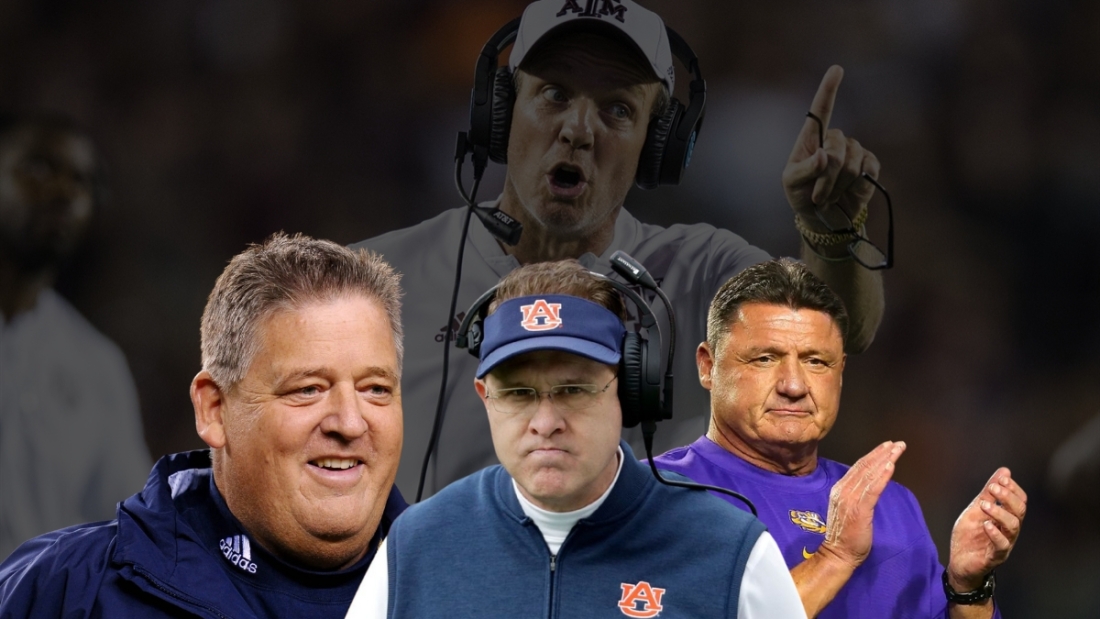In our wildest dreams would anyone pay us $77.5 million to hit the unemployment line. That’s what Texas A&M shelled out to Jimbo Fisher just to make him disappear in 2023. Welcome back to the absurd financial circus of college football, where firing a coach has costed programs a tremendous amount of money with the price tag now going up. We’ve talked this before but how did we get here? We now look back at some of the biggest checks schools have actually written to send coaches packing.
Look, we love the drama of college football here at Animal House. The upsets, the rivalries, the pure chaos. But these massive payouts? They’re a stark reminder that the sport has become a billionaire’s Playground. Programs are dropping fortunes on failed experiments, and it’s the fans who end up paying the price. We’ve pulled the latest from SportsGrid and USA Today AggiesWire to rank the top 10 biggest buyouts ever actually paid.
The Top 10 Wallet-Drainers
Jimbo Fisher — Texas A&M (2023): $76–77.5 million
Currently the king of all coaching payouts but this won’t last long. Fisher got the boot after six seasons without an SEC title, and A&M is still paying him annually through 2031. Boosters basically wrote a blank check to end the nightmare. An absolute masterclass of your resume locking an awesome retirement plan.
Gus Malzahn — Auburn (2020): $21.5–22 million
Auburn owed Malzahn big after eight years that included an SEC Championship. Firing him mid-stride cost them over $21 million—proof that even success doesn’t guarantee job security in the SEC. Making it to the National Championship in 2014 was good enough to land him such an extension in 2017. Now, he gets to call the Florida State offense knowing he is working for the love of football.
Charlie Weis — Notre Dame (2009) & Kansas (2014): approx. $19 million total
Weis an OG for double-dipping here. Notre Dame paid him $18.9 million alone, and Kansas chipped in more. The guy collected checks from two schools for years—a passive income pioneer.
Willie Taggart — Florida State (2019): $18 million
FSU boosters coughed up about $18 million after less than two seasons. This payout covered Taggart and his staff, showing just how quickly programs can turn on a coach when things go south. This one is where they pulled the plug fast considering how bad the FSU program was during his head coaching tenure.
Ed Orgeron — LSU (2021): $16.9–17 million
Orgeron won a national title in 2019, but two shaky seasons later, LSU bought him out. It’s wild—deliver a championship, and you’re still not safe from the chopping block. In College Football you’re only as good as your last envelope. Will passionately cheer for you in January when you raise the trophy and boo you in the Fall.
Tom Herman — Texas (2020): $15.4–15.6 million
Texas handed Herman one of the biggest Big 12 buyouts ever after four years. They replaced him with Steve Sarkisian, but Texas was more than okay with eating that cost shows how desperate the Longhorns were for a reset.
Art Briles — Baylor (2016): $15.1 million
Baylor paid up amid a massive sexual assault scandal. Briles’ settlement was hefty, but it highlights the dark side of these deals—sometimes the money flows even when things get ugly.
Scott Frost — Nebraska (2022): $15 million
Nebraska pulled the trigger early in 2022, opting for the full $15 million instead of waiting for a discount. More disappointing seasons in Lincoln meant the Cornhuskers had to pay to play.
Bobby Petrino — Louisville (2018): $14 million
Petrino’s second run at Louisville crashed and burned, costing the Cardinals $14 million. It’s a classic case of “fool me twice” in coaching hires.
Will Muschamp — South Carolina (2020): $12.9 million
The Gamecocks cut a nearly $13 million check midseason after another losing campaign. Muschamp’s tenure was solid but not spectacular, and South Carolina decided it was time to move on.
The Numbers are climbing
What gets me is how these numbers keep climbing. We’re talking about more cash than most athletic departments see in years, all to correct hiring mistakes. Coaches walk away millionaires while programs scramble to recover. Who is the one to take the financial burden? This money often comes from boosters—wealthy donors treating teams like their personal investments. When it flops, they foot the bill, but it creates this insane cycle where only the richest schools can afford to fail. And don’t forget the fans. Ticket prices, merchandise, donations—they all indirectly fuel this madness. Schools like Texas A&M can eat $77 million and keep going, but smaller programs? One bad hire could cripple them for years.
These buyouts aren’t just financial footnotes—they’re forcing programs to think twice about every hire. Rush into a big contract, and you’re stuck if it doesn’t work. It’s turning coaching searches into high-stakes poker games, where the wrong bet costs a fortune. Add in NIL deals, the transfer portal, and conference shakeups, and college football feels more like big business than amateur athletics. Is all this money making the game better, or just more cutthroat?
Wrapping This Up
The top 10 biggest college football coaching buyouts ever paid—headlined by Jimbo Fisher, Gus Malzahn, Charlie Weis, Willie Taggart, Ed Orgeron, Tom Herman, Art Briles, Scott Frost, Bobby Petrino, and Will Muschamp—paint a picture of a sport drowning in its own wealth. These aren’t just payouts; they’re cautionary tales about overcommitting to the wrong guy or pulling the plug too soon.
As revenue from TV deals and playoffs keeps pouring in, this list will get shattered soon. But here’s what really bugs me: college football is supposed to be about passion, tradition, and competition—not eight-figure severance packages. College Football is now the most profitable professional minor league of all sports.


